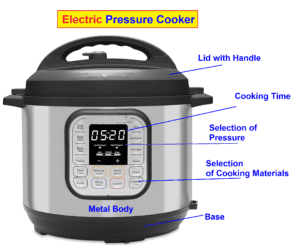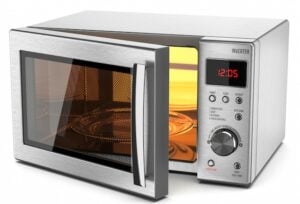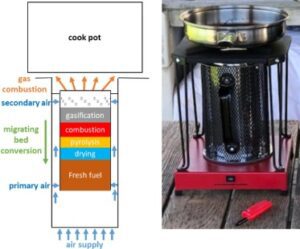Table of Contents
ToggleScope of Energy-Efficient and Clean cooking
- The scope of energy-efficient and clean cooking is vast, especially as global concerns around energy consumption, climate change, and public health grow.
- This area encompasses both technological innovations and sustainable practices aimed at reducing the environmental impact of cooking, improving energy efficiency, and ensuring health and safety.
- Below are the key areas where energy-efficient and clean cooking plays a significant role:
Environmental Impact and Climate Change
- Scope: Energy-efficient cooking reduces greenhouse gas emissions by lowering the use of fossil fuels such as coal, natural gas, and petroleum. Clean cooking technologies also reduce deforestation caused by wood collection for traditional cooking methods.
- Potential: Adoption of clean cooking can significantly reduce carbon emissions, with the potential to help achieve global climate goals, such as the Paris Agreement.
Health Improvements
- Scope:
- Clean cooking technologies reduce indoor air pollution, which is a major health risk in developing countries that rely on biomass (wood, charcoal, dung) for cooking.
- It reduces the risk of respiratory diseases caused by inhaling smoke and particulate matter.
- Potential:
- By transitioning to cleaner cooking methods like electric or biogas stoves, millions of people could avoid diseases related to indoor air pollution, improving public health, particularly for women and children.
Energy Conservation
-
- Scope: Energy-efficient cooking methods, such as induction cooking, air fryers, and pressure cookers, consume significantly less electricity or gas, which helps conserve energy at both household and national levels.
- Potential: Widespread adoption of energy-efficient appliances could lead to a reduction in household energy consumption and lower electricity bills, contributing to more sustainable energy use in residential sectors.

Modern energy-efficient and clean cooking methods
- Here are 15 modern energy-efficient and clean cooking methods that prioritize sustainability, efficiency, and health:
- Which is better either Biomass stove or Induction heating
Induction Cooking
- Energy Efficiency: Uses electromagnetic fields to heat pots directly, reducing heat loss and energy consumption.
- Clean Cooking: No open flames, minimizing heat and harmful emissions.
- Benefits: Fast cooking with precise temperature control and energy savings.

Solar Cooking
- Energy Efficiency: Uses solar energy as the sole power source, requiring no fuel or electricity.
- Clean Cooking: Zero carbon emissions, ideal for off-grid or eco-conscious cooking.
- Benefits: Environmentally friendly, reduces reliance on fossil fuels.

Electric Pressure Cookers (e.g., Instant Pot)
- Energy Efficiency: Cooks food quickly under high pressure, using less energy than traditional methods.
- Clean Cooking: Sealed cooking, retains nutrients, and uses less water.
- Benefits: Versatile, replaces multiple kitchen appliances, conserving both energy and space.

Air Frying
- Energy Efficiency: Uses hot air circulation to cook food, requiring less energy and oil compared to deep frying.
- Clean Cooking: Healthier due to the minimal use of oil, reducing fat intake.
- Benefits: Provides crispy food with less fat and quicker cooking times.
Steam Cooking
- Energy Efficiency: Steam uses minimal energy and water to cook food quickly and efficiently.
- Clean Cooking: No need for oils or fats, retaining more nutrients and flavor.
- Benefits: Ideal for vegetables, fish, and rice, offering health-conscious meals.

Microwave Cooking
- Energy Efficiency: Uses electromagnetic radiation to directly heat food, consuming far less energy than conventional ovens.
- Clean Cooking: Requires minimal water and oil, and is efficient for small portions or reheating.
- Benefits: Quick cooking with minimal energy use, especially for smaller meals.

.Convection Ovens
- Energy Efficiency: Circulates hot air using a fan, reducing cooking time and temperature.
- Clean Cooking: More efficient than conventional ovens, consuming less energy.
- Benefits: Provides even cooking with lower energy consumption, ideal for baking and roasting.
LPG and Biogas Stoves
- Energy Efficiency: Utilizes biogas from organic waste, reducing the need for fossil fuels.
- Clean Cooking: Produces fewer harmful emissions compared to traditional wood or coal stoves.
- Benefits: Uses renewable energy and contributes to waste management.
- Refer the Popular Gas Stove and Ignitors for Cooking in this post Applications

Rocket Stoves
- Energy Efficiency: Uses a small, efficient combustion chamber to burn fuel efficiently.
- Clean Cooking: Reduces fuel use (biomass or wood) and harmful emissions compared to open fires.
- Benefits: Can be used in off-grid settings and produces less smoke and pollutants.
-
Some Biomass is the Best for Hotels and Cooking

Thermal Cooking (Thermal Cookers)
- Energy Efficiency: Cooks food using retained heat, after heating food initially with minimal energy.
- Clean Cooking: No constant energy input after the initial heating phase.
- Benefits: Can cook soups, stews, and rice without continuous fuel consumption.
Smart Ovens
- Energy Efficiency: Equipped with sensors and smart technology to optimize energy use and cook precisely.
- Clean Cooking: Reduces overcooking and energy wastage with preset and remote control functions.
- Benefits: Allows for energy savings through accurate cooking times and temperatures.

Solar Ovens
- Energy Efficiency: Harnesses solar energy to cook without any external fuel or electricity.
- Clean Cooking: Completely eco-friendly and zero emissions.
- Benefits: Ideal for slow cooking and baking in areas with ample sunlight.
Biomass Gasification Stoves
- Energy Efficiency: Converts biomass into gas to burn more efficiently than traditional stoves.
- Clean Cooking: Significantly reduces smoke and harmful emissions.
- Benefits: High energy efficiency and suitable for off-grid cooking with renewable resources.

Electric Tandoors
- Energy Efficiency: Uses electric heating elements to cook at high temperatures, more energy-efficient than gas.
- Clean Cooking: No smoke or open flame, providing clean indoor cooking.
- Benefits: Ideal for grilling, baking, and roasting with precise temperature control.
Induction Rice Cookers
- Energy Efficiency: Uses induction technology to cook rice quickly and evenly with less energy consumption.
- Clean Cooking: Precise heat control, retains nutrients, and uses minimal water.
- Benefits: Convenient, quick, and energy-efficient for staple food preparation.
Key Benefits of Energy-Efficient and Clean Cooking Methods:
- Reduced Energy Consumption: These methods focus on minimizing electricity, gas, or fuel usage.
- Healthier Cooking: Many methods use less oil and preserve nutrients better than traditional techniques.
- Eco-Friendly: Several methods, such as solar cooking or biogas, rely on renewable energy sources, reducing environmental impact.
- Improved Air Quality: Clean cooking methods reduce harmful emissions and indoor air pollution, especially in biomass-dependent areas.
These methods represent a shift toward more sustainable, eco-friendly, and health-conscious approaches to cooking, benefiting both individuals and the environment.
Post Views: 895
